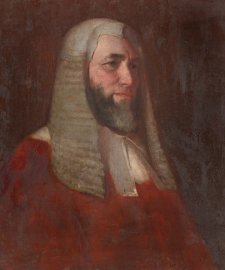Richard Windeyer (1806-1847), journalist, barrister and politician, was the eldest of the ten children born to Charles Windeyer and his wife Ann Mary and remained in England when the rest of his family went to New South Wales. While studying for his law degree, he worked as his father had, as a parliamentary reporter and journalist. Married in 1832, Richard was called to the Bar in 1834 - also the year that his only child, William Charles, was born. Encouraged by the opportunity to practice as a barrister in New South Wales, Richard left for the colony in 1835. In Sydney, Richard established a considerable practice and was noted as 'a barrister of superior abilities' and eloquence. Like his father, Richard acquired land in the Hunter Valley. Here, Windeyer built Tomago House (1843) and successfully cultivated 30 acres of vines, producing his first wine in 1845 with the assistance of several imported European workers. Richard was elected to the colony's first Legislative Council in 1843. He supported free trade and worked to open the British market to the colony's wheat. He was also interested in education, social welfare and law reform and became a member of the Aborigines Protection Society after appearing in trials arising from the Myall Creek atrocity of 1838. An 'able, enlightened, honest and uncompromising public man', Richard Windeyer died from a combination of illness, overwork and financial worries at the age of forty-one.







